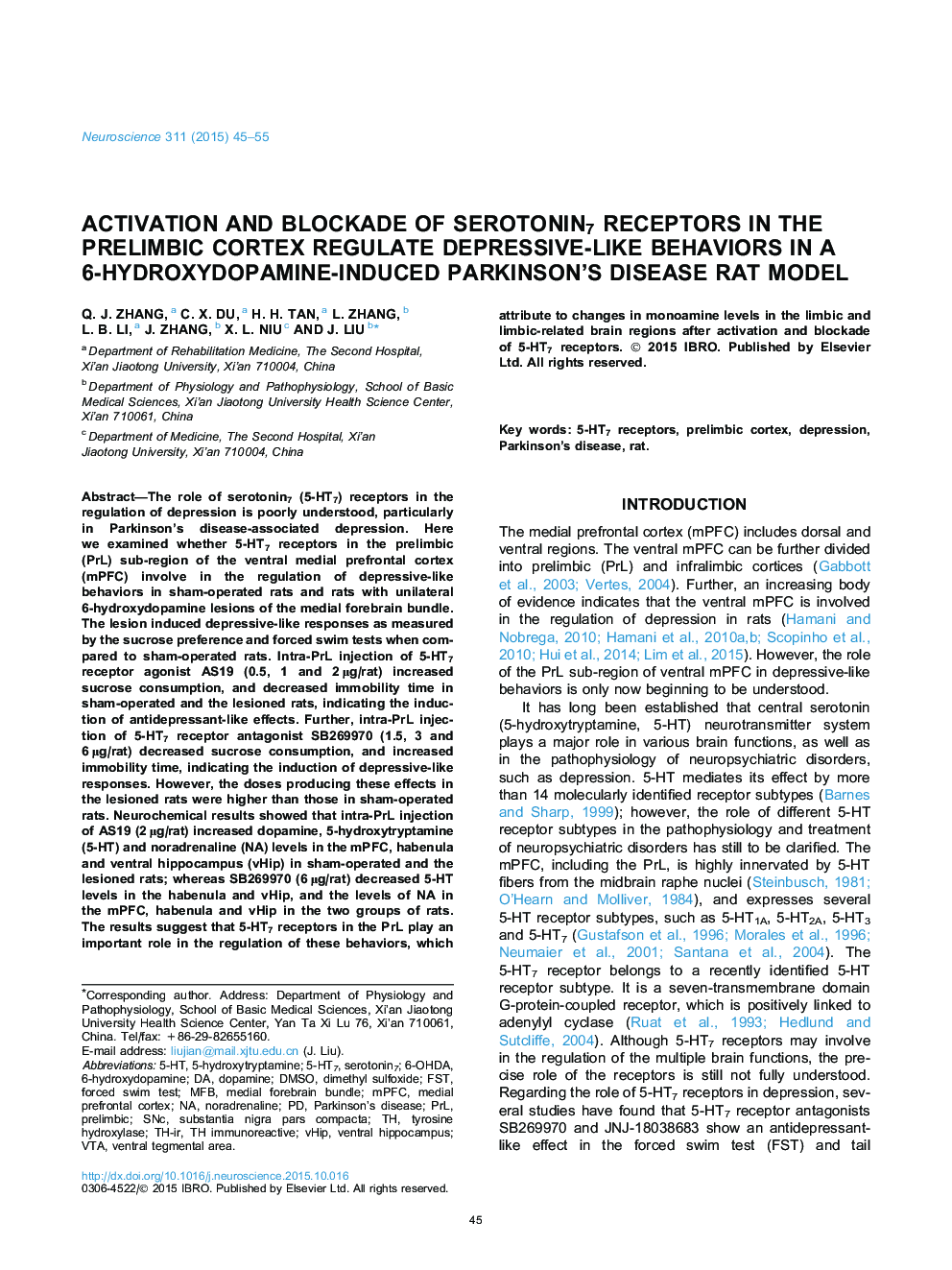| Article ID | Journal | Published Year | Pages | File Type |
|---|---|---|---|---|
| 6271668 | Neuroscience | 2015 | 11 Pages |
â¢Intra-PrL of 5-HT7 agonist produced antidepressant effects in sham and lesioned rats.â¢Intra-PrL of 5-HT7 antagonist induced depressive behaviors in sham and lesioned rats.â¢Intra-PrL of 5-HT7 agonist increased DA, 5-HT and NA levels in several brain regions.â¢Intra-PrL of 5-HT7 antagonist decreased 5-HT and NA levels in several brain regions.
The role of serotonin7 (5-HT7) receptors in the regulation of depression is poorly understood, particularly in Parkinson's disease-associated depression. Here we examined whether 5-HT7 receptors in the prelimbic (PrL) sub-region of the ventral medial prefrontal cortex (mPFC) involve in the regulation of depressive-like behaviors in sham-operated rats and rats with unilateral 6-hydroxydopamine lesions of the medial forebrain bundle. The lesion induced depressive-like responses as measured by the sucrose preference and forced swim tests when compared to sham-operated rats. Intra-PrL injection of 5-HT7 receptor agonist AS19 (0.5, 1 and 2 μg/rat) increased sucrose consumption, and decreased immobility time in sham-operated and the lesioned rats, indicating the induction of antidepressant-like effects. Further, intra-PrL injection of 5-HT7 receptor antagonist SB269970 (1.5, 3 and 6 μg/rat) decreased sucrose consumption, and increased immobility time, indicating the induction of depressive-like responses. However, the doses producing these effects in the lesioned rats were higher than those in sham-operated rats. Neurochemical results showed that intra-PrL injection of AS19 (2 μg/rat) increased dopamine, 5-hydroxytryptamine (5-HT) and noradrenaline (NA) levels in the mPFC, habenula and ventral hippocampus (vHip) in sham-operated and the lesioned rats; whereas SB269970 (6 μg/rat) decreased 5-HT levels in the habenula and vHip, and the levels of NA in the mPFC, habenula and vHip in the two groups of rats. The results suggest that 5-HT7 receptors in the PrL play an important role in the regulation of these behaviors, which attribute to changes in monoamine levels in the limbic and limbic-related brain regions after activation and blockade of 5-HT7 receptors.
